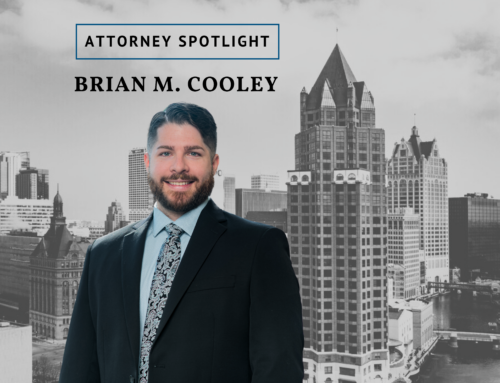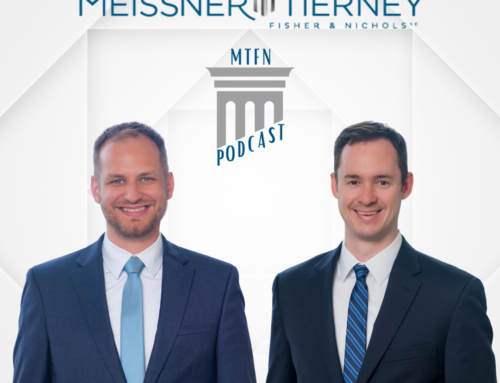The 2022-23 term of the Wisconsin Supreme Court gets underway this month with a packed oral argument calendar. More than half of the 13 arguments scheduled are in civil cases, and several of those could significantly impact various fields of law. Here’s a look at the month ahead:
Casanova v. Polsky, No. 2019AP1728 & 2019AP2063
Real Estate
Oral Argument: September 9
This case involves a lien priority dispute between residents of and investors in a senior housing facility that is now in receivership. The residents contend they have higher priority to recover their entrance fees and security deposits than the investors who hold a first mortgage on the facility. The case turns primarily on a statute, Wis. Stat. § 706.11, and a court of appeals case with similar facts, M&I First National Bank v. Episcopal Homes Management, Inc., 195 Wis. 2d 485, 536 N.W.2d 175 (Ct. App. 1995). The court of appeals ruled in the residents’ favor, relying heavily on documents prepared for the investors at the time of financing. Those documents indicated that “refundable resident deposits” would have priority over the investors’ mortgage lien.
Slamka v. General Heating and Air Conditioning, No. 2020AP128
Labor & Employment
Oral Argument: September 9
This preemption case involves a provision of Wisconsin’s right-to-work law and the National Labor Rights Act (NLRA). Underlying the appeal is Robert Slamka’s claim that General Heating and Air Conditioning violated Wis. Stat. § 111.04(3)(a) by requiring union membership as a condition of employment. The specific issue on appeal, however, is whether the Wisconsin Employment Relations Commission has jurisdiction to hear Slamka’s claim. The court of appeals held it did not, relying on the NLRA’s vesting of jurisdiction to hear unfair labor practice claims in the National Labor Relations Board.
Pagoudis v. Keidl, No. 2020AP225
Real Estate
Oral Argument: September 9
What do you get when you mix an undisclosed defects claim with three separate but related parties on the buyer side of the transaction? Turns out, a lot of standing challenges. Louis Pagoudis contracted with the Keidls to purchase a residential property via an LLC he owns and operates. Several months later, that LLC transferred the property to another LLC which Pagoudis also owns. When allegedly undisclosed defects were discovered, Pagoudis and both LLCs sued on several contract and tort theories. On appeal, the court is asked to decide which, if any, of the plaintiffs have standing to sue the seller. On the contract side, there are questions about whether liability may extend beyond the specific parties to the initial sale. On the tort side, the court must decide whether to adopt § 533 of the Restatement (Second) of Torts, which opens the door to third party recovery for fraudulent misrepresentation.
Murphy v. Columbus McKinnon Corp., No. 2020AP1124
Products Liability
Oral Argument: September 12
For the first time since the legislature codified products liability claims in 2011, the supreme court is set to weigh in on Wisconsin’s products liability statute, Wis. Stat. § 895.047. Utility line technician Matthew Murphy was injured when a utility pole fell on him while he was lifting it with a set of metal tongs. He sued the manufacturer of the tongs, alleging a design defect. Reviewing a summary judgment ruling, the court of appeals held, as a matter of first impression, that the statute (1) adopts the “risk-utility balancing” test from the Restatement (Third) of Torts to analyze whether there was a design defect, and (2) retains the “consumer-contemplation” test from the Restatement (Second) of Torts to determine whether the product was unreasonably dangerous. Besides reviewing this interpretation, the supreme court will also consider whether Murphy’s separate negligent design claim should be dismissed on summary judgment due to comparative fault.
5 Walworth, LLC v. Engerman Contracting, Inc., Nos. 2019AP1085 & 2019AP1086
Insurance
Oral Argument: September 12
This case lies at the intersection of two prior insurance decisions: American Family Mutual Insurance Co. v. American Girl, Inc., 2004 WI 2, 268 Wis. 2d 16, 673 N.W.2d 65, and Wisconsin Pharmacal Co. v. Nebraska Cultures of California, Inc., 2016 WI 14, 367 Wis. 2d 221, 876 N.W.2d 72. The dispute began when a recently constructed pool complex developed chronic leaks, prompting its demolition. The alleged causes are negligent installation by a subcontractor and defective shotcrete used in the pool’s construction. Commercial general liability insurers for the general contractor and the shotcrete supplier contest coverage. They argue the installation was not a covered “occurrence” (a defined term under the policies) because Wisconsin case law has held that defective workmanship is not, by itself, an occurrence. The insurers also contest coverage based on the absence of “property damage” (another defined term) to anything other than the insureds’ work or product. The court of appeals rejected both arguments at the motion to dismiss stage, holding that the harm caused to the broader pool complex could be a covered loss.
Lowe’s Home Centers, LLC v. City of Delavan, No. 2019AP1987
Taxation
Oral Argument: September 28
Lowe’s challenges the Delavan tax assessor’s decision to exclude several vacant—or “dark”—stores in his sales comparison analysis. The court of appeals affirmed the assessment, noting that the Wisconsin Property Assessment Manual directs assessors to “avoid using sales of improved properties that are vacant or distressed as comparable sales unless the subject property is similarly vacant or distressed.” On appeal to the supreme court, Lowe’s contends that categorically excluding dark stores from the sales comparison analysis runs afoul of the requirement to assess a property’s fee simple value apart from any business value associated with it.
ACUITY v. Estate of Shimeta, No. 2020AP189
Insurance
Oral Argument: September 30
At issue in this auto insurance case is the effect of a reducing clause in an underinsured motorist (UIM) policy. Following an accident caused by an underinsured motorist in which one insured was killed and other injured, Acuity seeks a declaration that the proceeds from the underinsured motorist’s insurer apply to reduce both the per-person limit and the per-accident limit in the insureds’ UIM policy. The court of appeals disagreed with Acuity’s interpretation of the policy, holding it could not aggregate the payments made to the two insureds to reduce the policy’s per-accident limit.






